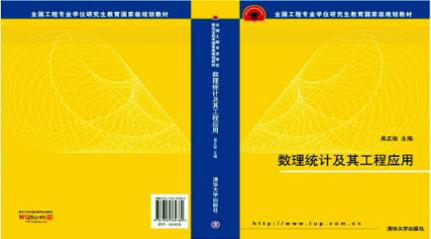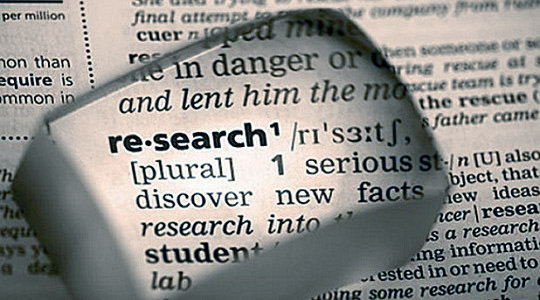
当前课程知识点:Western and Chinese Art: Masters and Classics > 11.Personality and Love for Ridicule: Xu Wei the Lunatic > 11.2 The madman Li Zhi > The madman Li Zhi
返回《Western and Chinese Art: Masters and Classics》慕课在线视频课程列表
返回《Western and Chinese Art: Masters and Classics》慕课在线视频列表
我们跟大家介绍明代思想史上
王阳明之后
第二个伟大的思想家李贽
李贽也是属于王门后学之人
但他跟王阳明的差别就在于
王阳明始终还是属于儒学传统中人
他在狂者的理想仍然还是圣人
而李贽不仅是把
王阳明的心学思想推到了极端
实际上他是突破了
王阳明(口误)的心学思想的儒家礼法
而进入到一种放弃一切礼仪规束的
独立自由的自我表现状态
李贽和中国的普通传统文人一样
在其人生的前半程
都是一种循规蹈矩
艰苦努力
而求功名通达的一种人生
李贽他早年得到了举人
但是由于家境贫寒
始终没有去考进士
所以他的仕途
就比那些有举人身份的人
更加地艰辛
他直到快50岁的时候
才得到了云南姚安府的知府的官衔
但是
他做了三四年官
本来可以要么连任
要么追求晋升
而他呢却在53岁之际
主动请辞不再做官了
李贽辞官之后
他并没有如一般官员一样
告老还乡
而是把妻儿送回故乡泰安之后
自己先到湖北的黄安后到麻城寄居
过起了他自己所追求的无亲无故的
自由自在的一种出家人的生活
关于自己的人生
李贽有一篇自传文这样说到
其性褊急
其色矜高
其词鄙俗
其心狂痴
其行率易
其交寡而面见亲热
其与人也
好求其过
前不悦其所长
其恶人也
既绝其人
又终身欲害其人
志在温饱
而自谓伯夷 叔齐
质本齐人
而自谓饱道饫德
分明一介不与
而以有莘借口
分明毫毛不拔
而谓杨朱贼仁
动与物迕
口与心违
其人如此
乡人皆恶之矣
昔子贡问夫子曰
乡人皆恶之何如
子曰
未可也
若居士
其可乎哉
李贽这一段自白是把自己
无保留的品格上的
自私自利的弱点暴露出来
而自私自利恰恰是他
所追求的所谓圣人之学的要领
所谓自私自利用我们今天的话来说
就是追求个人利益
追求自我表现
而不顾家国社会的需求
李贽主张
作为一个现实中的人
他的真心应当来自于最自然
最本我的表达
这就是他所说的童心
他说童心者真心也
若也童心为不可
是以真心为不可也
夫童心者
绝假纯真
最初一念之本心也
若失却童心
便失却真心
失却真心
便失却真人
人而非真
全不复有初矣
对于李贽来说童心真心
真人自我是统一的
就是要从自己最真实本然的感觉
和意愿出发
来面对世界
来行为处事
在李贽看来
我们现实生活中的人
从小到大
接受知识教育
社会培养训练
导致的结果就是我们被道理文件
所阻碍了自然纯真的心灵
所以他认为
我们在这个世界上生活关键就是
要回复到绝假纯真的天然
本来的那种心理状态
那种自我意识
这就是他讲的童心说的
核心意义
针对儒家的
文质彬彬
温柔敦厚
发乎情
止乎礼义的诗教理论
李贽提出了相反的自然说的主张
他说
盖 声色之来
发于情性
由乎自然
是可以牵合矫强而致乎
故自然发乎情性
则自然止乎礼义
非情性之外复有礼义可止也
惟矫强乃失之
故以自然之为美耳
又非于情性之外
复有所谓自然而然也
李贽此说就是要反对
儒家的礼仪教化的美学原则
而主张以自我情性为出发点的
自然而然的自我表达
他还有一段话就说得更加彻底
这种彻底可以说是
情感自然主义的美学主张
他说
且夫世之真能文者
此其初皆非有意于为文也
其胸中有如许无状可怪之事
其喉间有如许欲吐而不敢吐之物
其口头又时时有许多
欲语而莫可所以告语之处
蓄极积久
势不能遏
一旦见景生情
触目兴叹
夺他人之酒杯
浇自己之垒块
诉心中之不平
感数奇于千载
既已喷玉唾珠
昭回云汉
为章于天矣
遂亦自负
发狂大叫
流涕恸哭
不能自止
宁使见者闻者切齿咬牙
欲杀欲割
而终不忍藏之名山
投之于水火
李贽这一段话可以说是
中国晚期封建社会的文人
自我表现的一篇檄文
他主张的是对自己情感的
无所约束的
势不能和的
自由表达
这种表达极不符合于儒家的
文质彬彬 温柔敦厚的美学
也不符合道家的宁静致远
超然物外的美学
他是一种无拘无束的
自然之情的自由宣泄
李贽的
人生和他的哲学美学主张
都与两千余年来的
中国封建正统思想相抵牾
而他自己呢
也自称为出格丈夫
他说世上人总无甚差别
唯学出世法
非出格丈夫不能
今我等既为出格丈夫之事
而欲世人知我信我
不亦惑乎
既不知我
不信我
又与之辩
其为惑益甚
李贽的这段话表明
他明确认识到他的
超越一切
规范理念的自我追求
是不符合于两千余年来的
中国正统文化规范的
他理解自己的出格
也认识到自己的孤独
但是呢
他万万没想到的是他的这种出格
和孤独是彻底地
不兼容于当时的社会的
他在黄安的时候和他的好友
耿定向,因为好友不容于他的
出格言行而两人闹翻
所以他被迫从黄安到了麻城
到了麻城他被梅国桢等
一些名门望族资助而生活下来
但是呢
他的出格行为又触犯了
梅国桢等当地世家
他最出格的行为就是他常和
梅国桢家的一些女眷相与来往
比如说梅国桢家有一个
寡居的女士叫梅澹然
他和梅澹然来往甚密
并且写诗称梅澹然
称之为观音菩萨
李贽的行为触犯了
梅国桢和当地的世族
所以他们设计趁李贽不在的时候
把芝麻院一把火给烧了
失去居所的李贽被迫流亡到了京城
去拜访京城的朋友
但是
李贽一到京城就被京中的官员
向万历皇帝告了状
在他们指控李贽的罪行中
有如下说法
说李贽狂诞悖戾
未易枚举
刺谬不经
不可不毁
尤可恨者
寄居麻城
肆行不简
与无良辈游庵院挟妓女
白昼同浴
勾引士子妻女入庵讲法
至有携衾枕而宿者
一境如狂
又作《观音问》一书
所谓观音者
皆士人妻女也
万历皇帝接到这样的奏书
就下令逮捕了李贽
李贽在牢中被关了一年多
万历皇帝迟迟不予处置
在牢中的李贽
因惊惧相熬而绝望
他假借剃头借剃刀刎颈自尽
他临死之前
看守询问他
说你为什么要自尽
李贽借用了王维《夷门歌》的一句话
说
七十老翁何所求
他的这一句话和他的死
都表现了一个自誉为出格丈夫的
李贽寻求自由和个性
但是终归于一个悲惨的结局
然而李贽是死了
他的这种不为礼仪所束
桀骜任性的人生情怀
却成为后来的文人的一个楷模
-1.1Factual impairment between image and message
--Factual impairment between image and message
-1.2Relationship between Fact and Truth
--Relationship between Fact and Truth
-1.3The image revelry in the information age
--The image revelry in the information age
-1.4 Nature, animal and human body art
--Nature, animal and human body art
-1.5 Art: from concrete bodies to metaphorical constructions
--Art: from concrete bodies to metaphorical constructions
-1.6 On defining art
-1.7 Globalization and Consumerism
--Globalization and Consumerism
-1.8 Art and Anti-art
-1.9The value classics hold to the modern time
--The value classics hold to the modern time
-Homework1
-2.1 The occurrence of prehistoric art
--The occurrence of prehistoric art
-2.2 Mysterious cave mural paintings
--Mysterious cave mural paintings
-2.3 Symbolism of rock engravings
--Symbolism of rock engravings
-2.4 Expressive functions about prehistoric painting
--Expressive functions about prehistoric painting
-2.5 Aesthetic characters of prehistoric art
--Aesthetic characters of prehistoric art
-2.6 The tribal art of bodily operation
--The tribal art of bodily operation
-2.7 The construction to reach the heaven
--The construction to reach the heaven
-2.8 Immortal art in ancient Egyptian
-- Immortal art in ancient Egyptian
-Homework2
-3.1 The relationship between mythology and Greek culture
--The relationship between mythology and Greek culture
-3.2 The marks of the epics written by Homer
--The marks of the epics written by Homer
-3.3 Three greatest tragedy drammatists in Greece
--Three greatest tragedy drammatists in Greece
-3.4 The aesthetics woven into ancient Greek architecture
--The aesthetics woven into ancient Greek architecture
-3.5 The ancient Greek sculpture
-3.6 The Greek sculpture of the classic age
--The Greek sculpture of the classic age
-3.7 Works of Phidias
-3.8 The essence and verve of ancient Greek classical art
--The essence and verve of ancient Greek classical art
-Homework3
-4.1The beginning of Chinese painting and Calligraphy
--The beginning of Chinese painting and Calligraphy
-4.2 Majesty and divinity from bronze ware
--Majesty and divinity from bronze ware
-4.3 The Duke Mao Tripod and eternal characters
--The Duke Mao Tripod and eternal characters
-4.4The Philosophy of Chuang Tzu
--The Philosophy of Chuang Tzu
-4.5Qin Shi Huang’s Terracotta Warriors
--Qin Shi Huang’s Terracotta Warriors
-4.6The painting in the Han Dynasty
--The painting in the Han Dynasty
-4.7 The sculpture in the Han Dynasty
--The sculpture in the Han Dynasty
-Homework4
-5.1Master Chuang Tzu's impact on the Wei and Jin Dynasties
--Master Chuang Tzu's impact on the Wei and Jin Dynasties
-5.2Talking about Ji Kang
-5.3 The general spirit of the Wei and Jin Dynasties
--The general spirit of the Wei and Jin Dynasties
-5.4 Wang Xizhi and his unrivalled attainment in calligraphy
--Wang Xizhi and his unrivalled attainment in calligraphy
-5.5 A Preface to the Orchid Pavilion
-- A Preface to the Orchid Pavilion
-5.6 The penmanship of two famous calligraphers surnamed Wang
--The penmanship of two famous calligraphers surnamed Wang
-5.7Gu Kaizhi and his painting
-5.8 Great poet Tao Yuanming
-Homework5
-6.1The Chan School in the Tang dynasty
--The Chan School in the Tang dynasty
-6.2“Cursive King”: Zhang Xu
-6.3《Four Calligraphy Works of Ancient Poems》
--《Four Calligraphy Works of Ancient Poems》
-6.4Zhang Xu and Huai Su
-6.5Wu Daozi and his paintings
-6.6Wang Wei and Chinese landscape painting
--Wang Wei and Chinese landscape painting
-6.7The relation of painting and poetry
--The relation of painting and poetry
-Homework6
-7.1 The beginning of Renaissance: Giotto
--The beginning of Renaissance: Giotto
-7.2 Giotto’s naturalism
-7.3 The frescoes in the Arenal Chapel
--The frescoes in the Arenal Chapel
-7.4 The Renaissance artist in north Europe: Robert Campin
--The Renaissance artist in north Europe: Robert Campin
-7.5 The Ghent Altarpiece
-7.6 Jan Van Eyck’s secular paintings
-- Jan Van Eyck’s secular paintings
-Homework7
-8.1 The beauty of dawn during Renaissance
--The beauty of dawn during Renaissance
-8.2 The reproducer of nature: Da Vinci
--The reproducer of nature: Da Vinci
-8.3 The immortal work Mona Lisa
-8.4 The classicism of Raphael
-8.5 The Sistine Chapel ceiling
-8.6 The mythology and sculpture of Moses
--The mythology and sculpture of Moses
-8.7 Michelangelo's struggle between life and death
-- Michelangelo's struggle between life and death
-8.8 The perceptual Titian and Venice
--The perceptual Titian and Venice
-Homework8
-9.1Rubens and the Baroque Art
-9.2Poussin and his classical spirit
--Poussin and his classical spirit
-9.3Rembrandt and his aptitude of wielding light and shadow
--Rembrandt and his aptitude of wielding light and shadow
-9.4 Rembrandt in his self-portrait
--Rembrandt in his self-portrait
-9.5 Vermeer and his painting
-Homework9
-10.1Landscape painting from the Five Dynasties period to the Northern Song Dynasty
--Landscape painting from the Five Dynasties period to the Northern Song Dynasty
-10.2 Creating painting out of poetry by Emperor Huizong of Song
--Creating painting out of poetry by Emperor Huizong of Song
-10.3 Viewing the small through the large
--Viewing the small through the large
-10.4 Combining the tangible with the intangible
--Combining the tangible with the intangible
-10.5 The atmosphere of freedom, detachedness and ease of landscape painting
-- The atmosphere of freedom, detachedness and ease of landscape painting
-10.6 Dwelling in the Fuchun Mountains
--Dwelling in the Fuchun Mountains
-10.7 Friendliness in Ni Zan’s painting
--Friendliness in Ni Zan’s painting
-10.8 A pristine and boundless world in Ni Zan’s painting
--A pristine and boundless world in Ni Zan’s painting
-Homework10
-11.1The origin and expression of the madman culture
--The origin and expression of the madman culture
-11.2 The madman Li Zhi
-11.3 Xu Wei: from gifted scholar to mad man
--Xu Wei: from gifted scholar to mad man
-11.4 The aesthetic ideology of Xu Wei
--The aesthetic ideology of Xu Wei
-11.5 Xu Wei’s notions and theories on painting practise
--Xu Wei’s notions and theories on painting practise
-11.6 Miscellaneous Plants and Flowers
--Miscellaneous Plants and Flowers
-11.7 Drunkenness in Xu Wei's art
-Homework11
-12.1 Winckelmann
-12.2 Neoclassical master: David
-12.3 The Death of Marat
-12.4 The Intervention of the Sabine Women
--The Intervention of the Sabine Women
-12.5 The aestheticism works by Ingres
--The aestheticism works by Ingres
-12.6 The contrast between photography and paintings
--The contrast between photography and paintings
-12.7 Courbet and realism
-Homework12
-13.1 Rousseau and emotionalism
-13.2 Kant's view about the beautiful and the sublime
--Kant's view about the beautiful and the sublime
-13.3 Goethe, from Werther to Faust
--Goethe, from Werther to Faust
-13.4 Byron, romantic hero
-13.5 The painting laws of Romanticism
--The painting laws of Romanticism
-13.6 John Constable
-13.7 The world of Turner
-Homework13
-14.1 Western modernism and Rodin
-14.2 The Gates of Hell
-14.3 Painting conception of Manet
--Painting conception of Manet
-14.4 Impressionism of Monet
-14.5 Cezanne:the Father of the art of modernism
--Cezanne:the Father of the art of modernism
-14.6 Van Gogh:painting and life
-14.7 The art value of Van Gogh
-Homework14
-15.1 art modernism
-15.2 porcelain urinal of Marcel Duchamp
--porcelain urinal of Marcel Duchamp
-15.3 This is not a pipe
-15.4 The great innovation artist: Picasso
--The great innovation artist: Picasso
-15.5 the infinity of art
-15.6 the art after Andy Warhol
-Homework15
-Final exam

